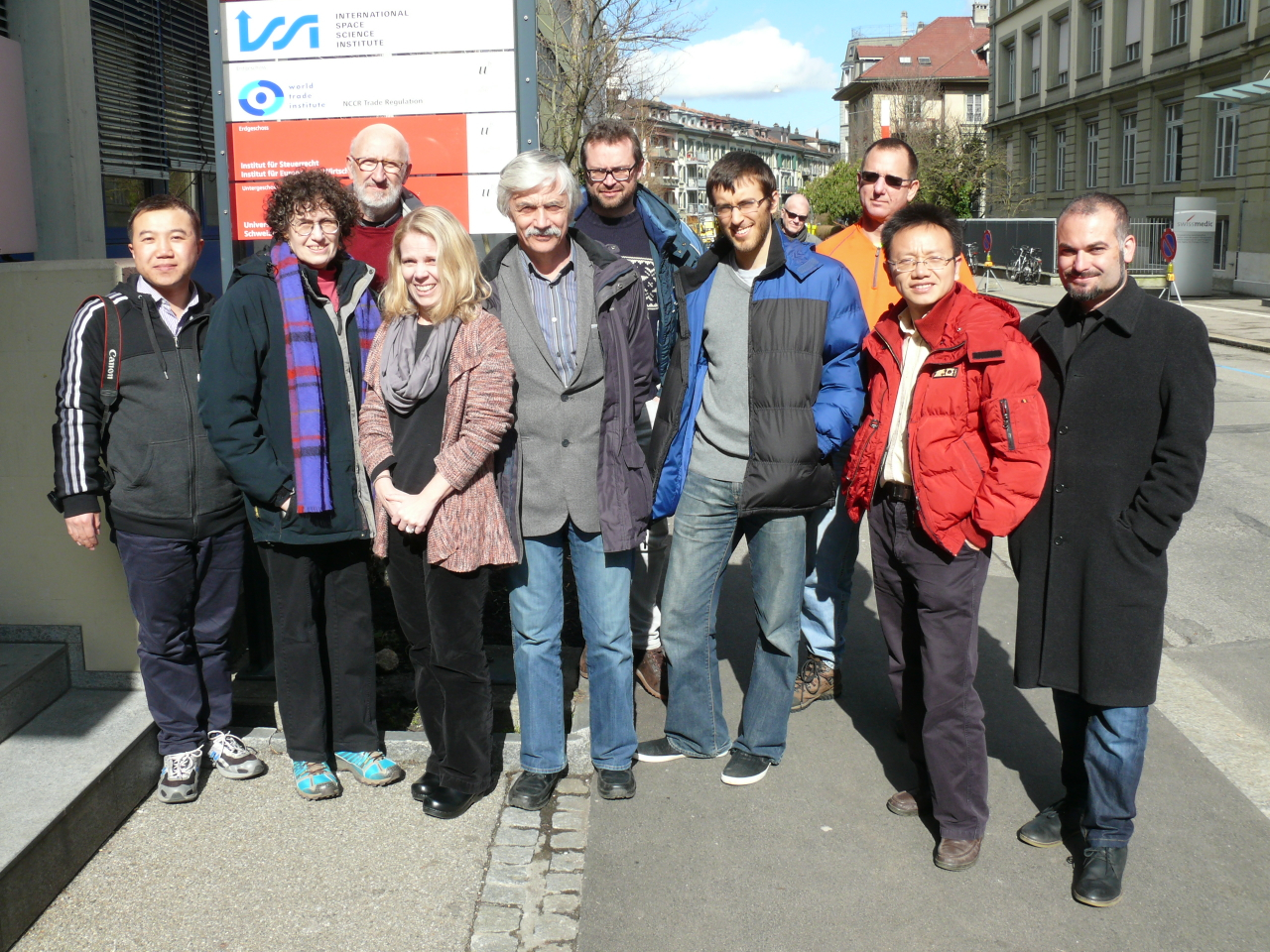Links:
GONG Hα data (click): Here you can find GONG data. Select the telescope of the network, the initial and end time, etc.
Catalog of EUV coronal waves: http://aia.lmsal.com/AIA_Waves/index.html
Pictures:
List of Events detected during the 1st ISSI meeting with GONG:
- 2015.03.04 to 06, NW quadrant
- 2015.02.24, NW quadrant, large oscillation of a filament after the eruption of a closer filament. The mechanism of triggering could be similar to sympathetic eruptions.
- 2015.02.05, SE quadrant, oscillation of a large filament that crossed the solar disk from the end of January to the middle of February. One end of the filament seems connected to an AR with a magnetic topology resembling a null point. The oscillations are very clear and the excitation seems that is produced at the AR. It could be also interesting to study the counter streaming placing slits over the spine when the filament is not apparently oscillating.
TO DO
In the first meeting we have discussed several possible works to do. In a the following a list of todos and the people that could be involved:
Observations:
- Make a catalogue with the data already published and try to find regularities. Bojan proposed that an student could do it.
- Make a catalogue directly looking at the available data. It is necessary to define a strategy for this point. The LALO are easily detectable in ha but the LATOs maybe not. These is more ambitious than point 1 and a prepared student will be necessary. The LALOs can be detected easily with GONG Ha. The LATOs could be detected looking at the EIT/Moreton catalogs. A catalog is http://aia.lmsal.com/AIA_Waves/index.html. Peng-Fei you commented that there are more. I can prepare to the student to look for oscillations on the GONG data.
- Study some good examples from different points of view. Now it is very easy to find good events. We are close to the solar maximum and the number of filaments and activity is high. I will prepare a list of interesting events that can be studied. All the team members can be involved.
- Study photosphere to try to find signatures of the LAOs and triggering. This is a job for Pete. Maybe Jaume can collaborate to apply the CEOF technique to find oscillations correlated.
- Try to find an oscillatory event where the filament is located at the limb and where the field lines can be seen similar to the work of Qinming. We discussed this possibility but it could be inside point 3.(This point will be deleted)
- Try to find asymmetric oscillation in the sense that the oscillations are along non-uniform radius curvature.
- Try to determine the possible coupling between the longitudinal and transverse motions. Maybe we can analyze the possible oscillations in the direction perpendicular to the LALOs.
- Try to find transverse oscillations. In the event of 2010-08-20 there are transverse motions. Kalman and me we can analyze the oscillations in both directions. We need to change our code.
Theory:
- We discussed to study resonant absorption in transverse oscillations. This study has been done for a single thread. However, it is necessary to study the resonance with large amount of threads and consider oscillations of the whole filament magnetic structure. Jaume, José Luís, Michael, and me can consider this point.
- Study the possible shift of frequency related to the large amplitude. Also numerical. Shift of frequency proportional to the amplitude squared. This is a nonlinear effect. Michael, Qingmin, Peng-Fei can consider this effect.
- Extent to longitudinal oscillations on loops to filaments. In loops the conduction is important but in filaments it is not important. It necessary to modify the model.
- Include mass accretion in a wave model. Michael and I we are working on this.
- Study the stability on prominences. Check literature. Bojan points that checking the frequency of helical filaments we can determine the instability of the filament. High freq. -> stable and low freq. -> less stable maybe approaching to instability.
- Numerical simulations of jets in filament channel structures. Judy can be in charge of this point.
- Numerical simulations of an eruption producing oscillations in another filament. See February 24. Also simulations of an external wave (shock) producing oscillations on filament. Peng-Fei could be in charge.
Please, tell me if you want to modify some of the points or include more. Also, tell who want to be involved in the different points.

